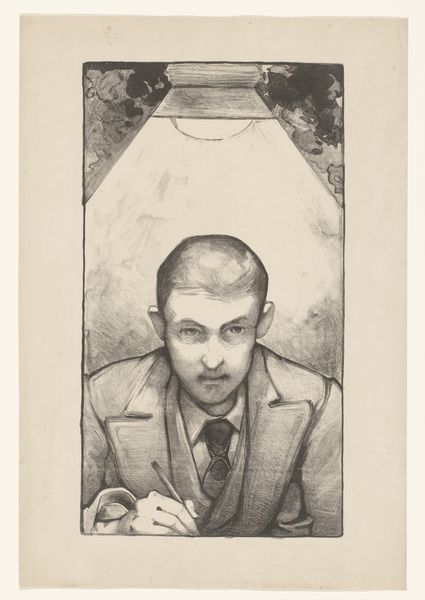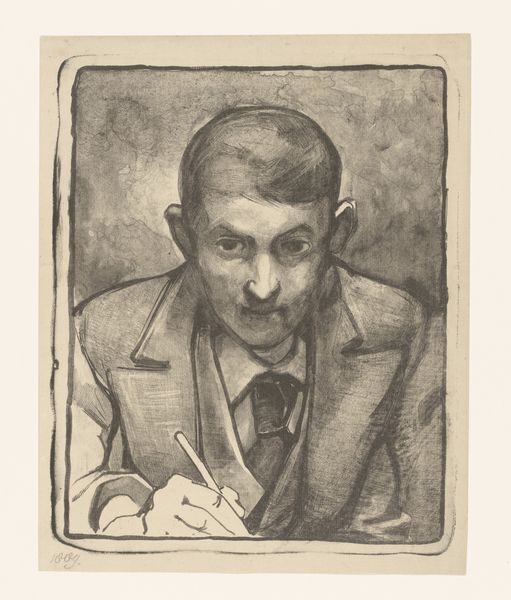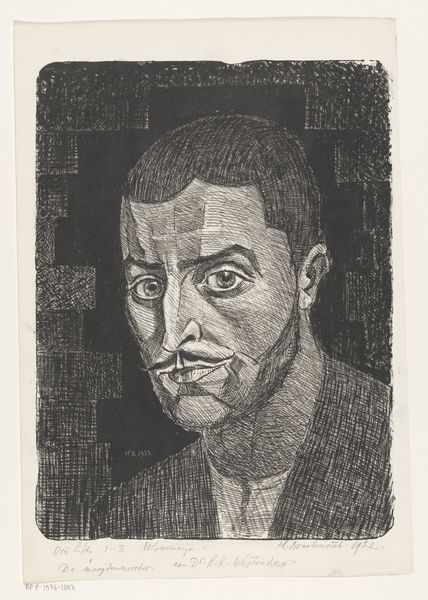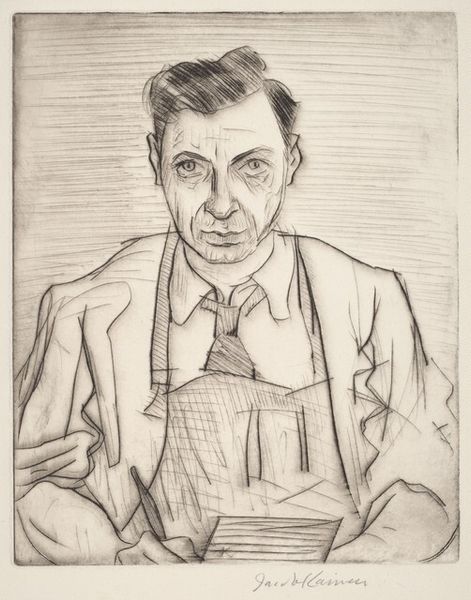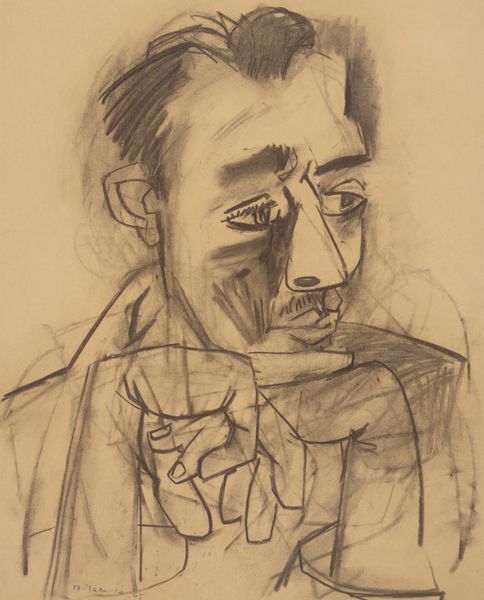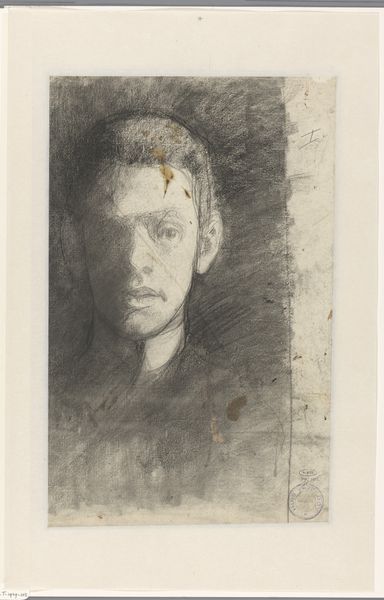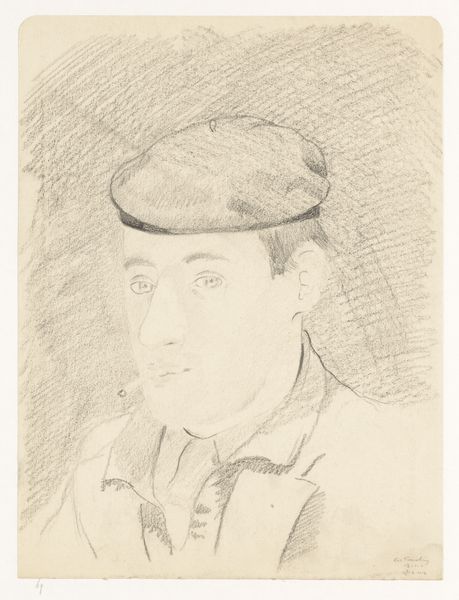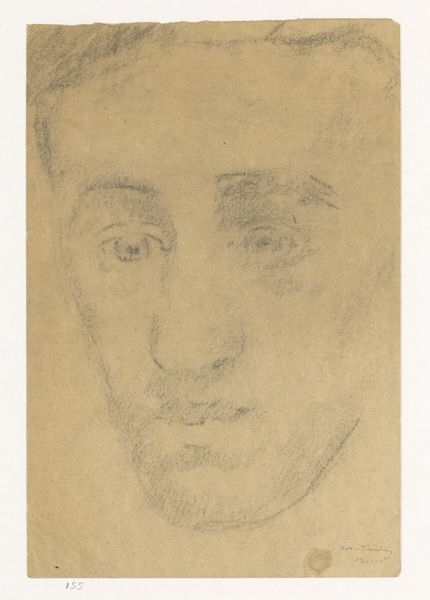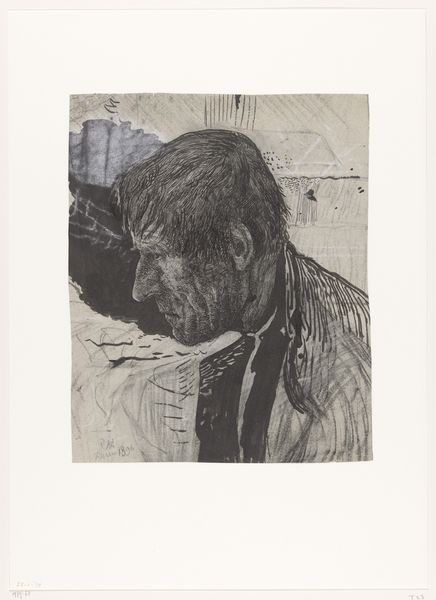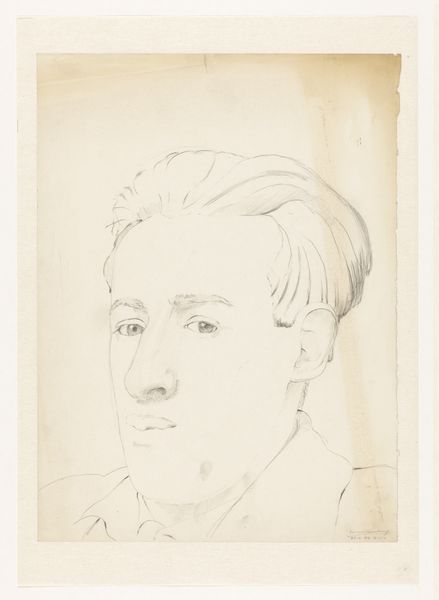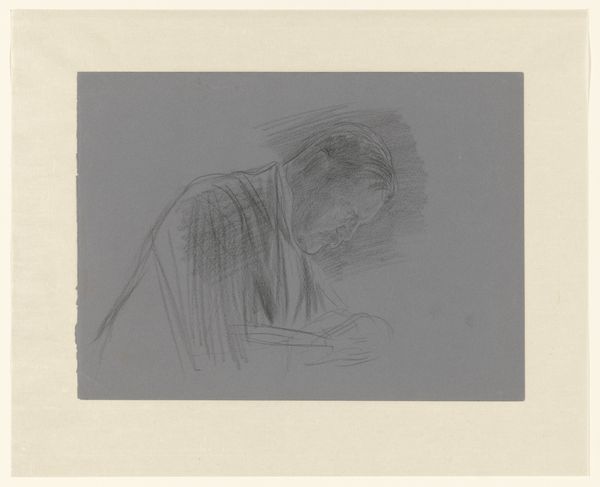
drawing, pencil
#
portrait
#
drawing
#
self-portrait
#
pencil drawing
#
pencil
#
portrait drawing
#
modernism
#
realism
Dimensions: height 367 mm, width 207 mm
Copyright: Rijks Museum: Open Domain
Curator: Before us hangs a compelling self-portrait by Bernard Willem Wierink, created sometime between 1866 and 1939. What strikes you about this drawing? Editor: It’s intensely lit from above, giving a rather theatrical, even ominous feel to the piece. The stark contrast between light and shadow is hard to ignore, focusing my attention on his eyes, especially. Curator: Indeed. Wierink, although somewhat obscure now, lived through a period of immense social and artistic upheaval. He lived through it. This piece provides insight into the artist and his station in life. Consider the broader context: self-portraits in this era were often about declaring artistic independence and navigating changing societal roles. Editor: Looking closely, the materiality of the pencil work is interesting, too. See how the hatching defines the form, the textures of the suit versus the skin. And that single light source dominates the composition. It almost flattens him, rendering his features both realistic and stylized simultaneously. Curator: The use of light isn't accidental; the sharp illumination, especially coming from above, speaks to the shifting power dynamics within the art world at the turn of the century, including a growing fascination with industrial power and visibility. Artists used self-portraiture to control their narrative in a world increasingly driven by public perception and the mass media. Editor: But it’s more than just external forces, isn’t it? The intimacy achieved with such basic media —pencil on paper— is remarkable. His direct gaze confronts the viewer. There's a vulnerability but also a controlled intensity. Curator: The choice of medium is relevant to its wider production. Wierink produced this around the same time as other well known Dutch symbolists like Jan Toorop and so on. They chose to pursue introspective artwork due to an increasingly rigid and authoritarian societal environment. Editor: A compelling work overall, this marriage of light, texture, and medium provides much more to view beyond the surface. Curator: Absolutely, by considering its place, this simple image gives us a unique vantage on both Wierink as an artist and on that transformational epoch.
Comments
No comments
Be the first to comment and join the conversation on the ultimate creative platform.
